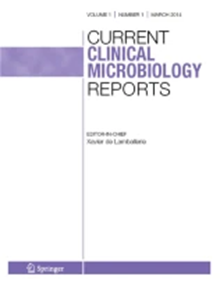Molecular Mechanisms of HIV-1 Latency from a Chromatin and Epigenetic Perspective
IF 2.7
Q2 MICROBIOLOGY
引用次数: 0
Abstract
Abstract Purpose of Review The main obstacle to an HIV-1 cure is the reservoir of HIV-1 infected cells. While antiretroviral therapy (ART) eliminates the HIV-1 virus effectively, it does not target the reservoir. To eliminate infected cells, we need an improved understanding of the reservoir maintenance and reactivation mechanisms, including the influence of chromatin. Recent Findings The last years’ technological advances enable an in-depth study of the reservoir, uncovering subsets of infected cells, proviral integration sites, and single-cell nucleosome histone modifications. These revelations illustrate how the immune system and cell proliferation shape reservoirs under long-term ART. These forces create highly individual reservoirs that will require personalized treatment for their eradication. Summary A greater understanding of HIV-1 latency mechanisms, focusing on chromatin features, proviral reservoir dynamics, and inter-individual differences, can drive the development of more precise HIV-1 treatment strategies, ultimately achieving a globally available HIV-1 cure.从染色质和表观遗传学的角度看HIV-1潜伏期的分子机制
HIV-1治疗的主要障碍是HIV-1感染细胞的储存库。虽然抗逆转录病毒疗法(ART)可以有效地消除HIV-1病毒,但它并不针对病毒库。为了消除受感染的细胞,我们需要更好地了解储存库的维持和再激活机制,包括染色质的影响。近年来的技术进步使对病毒库的深入研究成为可能,揭示了感染细胞的亚群、原病毒整合位点和单细胞核小体组蛋白修饰。这些揭示说明了免疫系统和细胞增殖如何在长期抗逆转录病毒治疗下形成储库。这些力量产生了高度个性化的水库,需要个性化的治疗来消灭它们。更深入地了解HIV-1潜伏机制,重点关注染色质特征、前病毒库动力学和个体间差异,可以推动更精确的HIV-1治疗策略的发展,最终实现全球可用的HIV-1治愈。
本文章由计算机程序翻译,如有差异,请以英文原文为准。
求助全文
约1分钟内获得全文
求助全文
来源期刊

Current Clinical Microbiology Reports
MICROBIOLOGY-
CiteScore
7.50
自引率
1.90%
发文量
9
期刊介绍:
Current Clinical Microbiology Reports commissions expert reviews from leading scientists at the forefront of research in microbiology. The journal covers this broad field by dividing it into four key main areas of study: virology, bacteriology, parasitology, and mycology. Within each of the four sections, experts from around the world address important aspects of clinical microbiology such as immunology, diagnostics, therapeutics, antibiotics and antibiotic resistance, and vaccines. Some of the world’s foremost authorities in the field of microbiology serve as section editors and editorial board members. Section editors select topics for which leading researchers are invited to contribute comprehensive review articles that emphasize new developments and recently published papers of major importance, which are highlighted in annotated reference lists. These timely reviews of the literature examine the latest scientific discoveries and controversies as they emerge and are indispensable to both researchers and clinicians. The editorial board, composed of more than 20 internationally diverse members, reviews the annual table of contents, ensures that topics address all aspects of emerging research, and where applicable suggests topics of critical importance to various countries/regions.
 求助内容:
求助内容: 应助结果提醒方式:
应助结果提醒方式:


